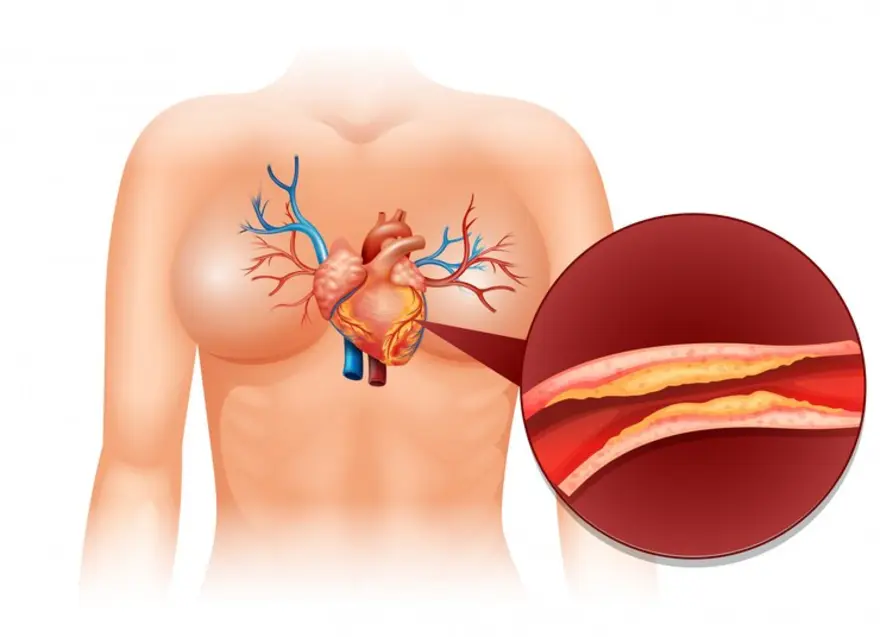asthma treatment
A Comprehensive Guide On Asthma - Symptoms, Causes, Types, Diagnosis & Treatment
Are you worried about asthma and its impact on your health? Asthma is a common respiratory condition that affects millions of people worldwide. In this article, we will delve into the essential aspects of asthma, including its symptoms, asthma causes, types of asthma, diagnosis and treatment options. Whether you're looking for information for yourself or a loved one, understanding asthma is the first step towards effective management and improved quality of life. What is asthma? Asthma is a chronic lung condition characterised by inflammation and narrowing of the airways, leading to breathing difficulties. Common symptoms include wheezing, coughing, chest tightness and shortness of breath. Triggers can include allergens, respiratory infections and environmental factors. Treatment typically involves medications to control symptoms and lifestyle management. Asthma can affect people of all ages and its severity varies from mild to severe. What is an asthma attack? An asthma attack is a sudden and acute exacerbation of asthma symptoms, which can be life-threatening if not promptly managed. During an asthma attack, the airways in the lungs become inflamed and constricted, making it extremely difficult to breathe. Common symptoms of an asthma attack include severe shortness of breath, wheezing, coughing and chest tightness. The triggers for asthma attacks can vary but often involve exposure to allergens, irritants, respiratory infections, or intense physical activity. The muscles around the airways can tighten, leading to the narrowing of the air passages. Additionally, excess mucus production further obstructs airflow. Prompt treatment during an asthma attack is essential and typically involves using a quick-relief inhaler (usually containing albuterol) to relax the airway muscles and reduce inflammation. In severe cases, medical attention may be necessary and hospitalisation might be required. What types of asthma are there? Asthma is a respiratory condition that can manifest in various forms, often categorised into different types based on specific triggers and symptoms. Here are some common types of asthma: 1. Allergic Asthma: This is the most common type of asthma, triggered by allergens such as pollen, dust mites, pet dander and mould. Allergic asthma leads to airway inflammation and constriction when exposed to these allergens. 2. Non-Allergic Asthma: Unlike allergic asthma, non-allergic asthma is not triggered by allergens. It can result from factors like respiratory infections, exercise, cold air, smoke, or strong odours. 3. Exercise-induced bronchoconstriction (EIB): This type of bronchial asthma is triggered by physical activity. During exercise, the airways can narrow, leading to symptoms like coughing and wheezing. 4. Occupational Asthma: Some individuals develop asthma due to exposure to workplace irritants, such as chemicals, fumes, or dust. These irritants can lead to occupational asthma with typical asthma symptoms in adults. 5. Cough-Variant Asthma: Instead of wheezing or shortness of breath, this type primarily presents as a persistent cough, which can be triggered by allergens, cold air, or irritants. 6. Aspirin-Induced Asthma: This form of asthma is triggered by the ingestion of aspirin or other non-steroidal anti-inflammatory drugs (NSAIDs). It can cause severe respiratory reactions in individuals sensitive to these medications. 7. Childhood Asthma: Asthma that develops in childhood is usually characterised by recurrent wheezing, coughing and shortness of breath. It may persist into adulthood. 8. Late-Onset Asthma: This type of asthma develops later in life, often after the age of 40. It may be related to factors such as allergies, infections, or environmental exposures. Who can get asthma? Different types of asthma can affect individuals of all ages and backgrounds. People with a family history of bronchial asthma or allergies are at a higher risk. Additionally, exposure to environmental factors such as allergens, tobacco smoke and air pollution can increase the likelihood of developing asthma. While anyone can get asthma, certain factors, including genetic predisposition and environmental exposures, play a role in its development. Early asthma diagnosis and proper management are essential for those who develop asthma to control symptoms. What causes asthma? While the exact asthma causes are not fully understood, several factors contribute to its development: 1. Genetics: Individuals with a family history of asthma or other allergic conditions are more susceptible to asthma. 2. Allergens: Exposure to allergens like pollen, dust mites, pet dander and mould can trigger asthma, particularly in allergic individuals. 3. Respiratory Infections: Viral infections, especially during early childhood, can increase the risk of developing asthma. 4. Environmental Factors: Tobacco smoke, air pollution and occupational exposure to irritants can contribute to asthma development. 5. Atopic Conditions: Allergic conditions like atopic dermatitis (eczema) and allergic rhinitis (hay fever) are linked to asthma development. 6. Obesity: Obesity is associated with an increased risk of asthma, although the exact mechanisms are complex. What are common asthma attack triggers? Common asthma attack triggers are factors or substances that can worsen asthma symptoms and may even lead to an asthma attack. These triggers can vary among individuals, but the ones listed below are widely recognised as common culprits for developing or worsening asthma symptoms. 1. Allergens: Substances in the air like pollen, dust mites, mould, pet dander and cockroach droppings can provoke asthma attacks in allergic individuals. 2. Respiratory Infections: Recurrent viral infections such as the common cold, cough or flu can exacerbate asthma symptoms in adults and trigger attacks. 3. Smoke: Both direct tobacco smoke and secondhand smoke are potent triggers for asthma attacks. 4. Air Pollution: High levels of air pollution, including fine particulate matter and ground-level ozone, can irritate the airways and provoke attacks. 5. Strong Odours and Irritants: Perfumes, cleaning products and other strong odours can irritate the airways, as can irritants like chemical fumes or fumes from burning wood or gas. 6. Cold Air: Breathing in cold air, especially during high physical activity, can constrict airways and induce asthma attack symptoms. 7. Exercise: Exercise-induced bronchoconstriction, commonly known as exercise-induced asthma, can be a trigger for some individuals during physical activity. 8. Stress and Emotions: Emotional stress or tension can lead to hyperventilation and trigger asthma attacks in some individuals. 9. Medications: Certain medications, such as non-steroidal anti-inflammatory drugs (NSAIDs) or beta-blockers, can exacerbate asthma in sensitive individuals. 10. Gastroesophageal Reflux Disease (GERD): Stomach acid backing up into the oesophagus can worsen asthma symptoms in adults in some cases. 11. Weather Changes: Sudden weather changes, particularly during thunderstorms, can increase pollen levels in the air, which may trigger asthma. What are the signs and symptoms of asthma? Asthma is characterised by various signs and symptoms, which you must be aware of. Common symptoms include: 1. Coughing: Particularly at night or early morning. 2. Wheezing: A whistling sound during breathing. 3. Shortness of Breath: Difficulty in breathing, especially during physical activity. 4. Chest Tightness: A feeling of constriction in the chest. How do healthcare providers diagnose asthma? 1. Medical History: They discuss the patient's symptoms and medical history. 2. Physical Examination: A physical exam, including listening for wheezing and assessing breathing patterns. 3. Lung Function Tests: Spirometry measures lung function to check for airflow obstruction. 4. Peak Flow Measurement: This portable device helps monitor changes in airflow. 5. Allergy Testing: Identifying allergic triggers that may contribute to asthma. 6. Chest X-ray or CT Scan: These can rule out other conditions. 7. Bronchoprovocation Test: This test assesses airway hyperresponsiveness. What asthma treatment options are there? Asthma treatments aim to manage and control the condition to reduce symptoms and improve quality of life. Some of the key asthma treatments include: 1. Inhaled Corticosteroids: These anti-inflammatory medications reduce airway inflammation. 2. Bronchodilators: Short-acting (SABA) and long-acting (LABA) bronchodilators relax and open airways, providing quick relief and long-term control. 3. Leukotriene Modifiers: These medications block the action of leukotrienes, chemicals that contribute to asthma symptoms. 4. Monoclonal Antibodies: These are newer treatments that target specific immune system proteins involved in asthma. 5. Oral Corticosteroids: Reserved for severe cases, these are taken orally to reduce inflammation. 6. Allergy Medications: If allergies trigger asthma, allergy treatments may help. 7. Lifestyle Management: Avoiding triggers, maintaining a healthy lifestyle and following an asthma action plan are crucial. 8. Biologics: These are specialised medications for severe, uncontrolled asthma. Remember to consult a credible healthcare provider to manage your asthma and follow the treatment plan as advised. What is asthma control? Asthma control refers to the management of asthma symptoms and prevention of exacerbations. It involves reducing symptoms like coughing, wheezing and shortness of breath. Control actions often include using medications, recognising and avoiding triggers, following an asthma action plan and regularly assessing symptoms using tools like the Asthma Control Test. The goal is to minimise asthma symptoms and maintain lung function within a normal range. How do you monitor asthma symptoms? 1. Keep a Symptom Diary: Record daily symptoms, including coughing, wheezing and shortness of breath. 2. Use Peak Flow Meter: Measure peak expiratory flow to assess lung function. 3. Asthma Action Plan: Work with your healthcare team to create an action plan outlining when to adjust medications. 4. Regular Check-ups: Schedule periodic appointments with your healthcare provider for assessment and adjustments. 5. Recognise Triggers: Identify and avoid triggers that worsen symptoms. 6. Emergency Plan: Be aware of signs of a severe attack and know when to seek immediate medical help. How can I prevent an asthma attack? To prevent asthma attacks, follow these steps: 1. Take prescribed medications regularly. 2. Avoid triggers like smoke and allergens. 3. Create an asthma action plan with your healthcare provider. 4. Monitor symptoms and peak flow. 5. Maintain a healthy lifestyle. 6. Get vaccinated for respiratory infections. What is an asthma action plan? An asthma action plan is a personalised document provided by a healthcare provider to individuals with asthma. It outlines how to manage asthma effectively, including daily medications, recognising worsening symptoms and steps to take during an asthma attack. It uses a colour-coded system (green for well-controlled, yellow for caution and red for danger) to simplify instructions. This helps to better control your condition and seek appropriate care when needed. What should I do if I have a severe asthma attack? During a severe asthma attack, it's crucial to take immediate action to ensure your safety. Here are some steps you must follow to control the situation in the best way: 1. Stay Calm: Try to remain calm as stress can worsen symptoms. 2. Use Your Inhaler: Take your quick-relief inhaler (usually a blue one) as prescribed. Use a spacer if available. 3. Sit Upright: Sit in an upright position to help with breathing. 4. Breathe Slowly: Take slow, deep breaths to control panic and improve airflow. 5. Inform Someone: Tell someone nearby about the situation and let them know you are having an asthma attack. 6. Continue Medications: If you have prescribed asthma medications, continue taking them as directed. 7. Wait for Help: While waiting for assistance, focus on controlled breathing and avoiding triggers. How do you know if you do or don’t have asthma? Here's how you can determine if you have asthma: Common symptoms include wheezing, shortness of breath, coughing and chest tightness. If you frequently experience these, it may be a sign. If your symptoms improve with asthma medications, it suggests asthma. Asthma can mimic other respiratory conditions, so tests help rule out alternatives. Can asthma be cured? How to cure asthma forever? If you wonder, you should know that asthma cannot be cured. While asthma can be effectively managed with medications and lifestyle adjustments, there is no permanent cure. Asthma treatment aims to control symptoms, prevent exacerbations and improve the quality of life. Why is my asthma worse at night? While asthma can show symptoms or worsen at any time of the day, some of you may find your symptoms worsening more at night. It happens due to several factors like: 1. Natural Body Rhythms: Our body has natural circadian rhythms and at night, some functions, including lung function, may decline. This can make asthma symptoms more pronounced during the night. 2. Exposure to Allergens: Allergens like dust mites, pet dander and pollen can accumulate in bedding and pillows. When you lie down to sleep, you come in contact with them and may inhale these allergens. This can trigger asthma symptoms. 3. Reclined Position: Lying down in a reclined position can lead to mucus and other secretions pooling in your airways. This can make it harder to breathe, particularly if you have nighttime asthma. 4. Cooler Temperatures: Nighttime temperatures are often cooler and cold air can trigger asthma symptoms in some individuals. 5. Hormonal Changes: Hormonal fluctuations that occur during the night can affect airway inflammation and make asthma worse. 6. Medication Timing: If you're not taking your asthma medications as prescribed or if you're missing nighttime doses, this can contribute to nighttime asthma symptoms. 7. Infections: Respiratory infections, which are often more active at night, can exacerbate asthma. If you find yourself struggling with asthma symptoms at night, consult your doctor or pulmonologist, who will review your symptoms and medical history for better asthma treatment. Conclusion Asthma is a chronic condition with manageable symptoms. It's best to diagnose it at the earliest. For accurate and convenient testing, Metropolis Labs is a great option. With a team of qualified blood collection technicians who make at-home visits, you can get your blood samples collected with ease. Metropolis Labs ensures the processing of your samples at advanced diagnostic facilities and delivers your reports directly to your inbox and the Metropolis TruHealth app. Visit Metropolis Labs today.
What you must know about asthma in kids
Asthma, is a common medical condition which affects the respiratory tracts making breathing more laborious and difficult. Kids can get asthma too, however, the symptoms can be a little different. Worldwide, more than 6 million children below 18 years of age are affected by it. In fact, the condition affects about 15% of growing children, with boys more commonly affected than girls. How do kids get asthma? Asthma primarily results from airway hypersensitivity to common household allergens, and the most commonly implicated allergen is house dust mites, tiny bugs that live in house dust. Hyper-responsiveness to any allergen over a period of time leads to chronic inflammation followed by variable airflow obstruction. However why some children are more susceptible over others is not clearly understood, although a genetic cause (chromosome 5q polymorphism) is postulated to be associated with it. Apart from it, second hand smoke, obesity, maternal vitamin D deficiency and poor hygiene are also some of the associated predisposing factors. The exposure of allergen produces a hypersensitivity reaction, which in turn increases levels of serum immunoglobulin (IgE and IgG4) in blood. Immunoglobulins are a class of proteins which are produced by the body as a natural defence against foreign pathogens. Apart from these immunoglobulins, the body produces an excess of blood cells known as Eosinophils. Although both immunoglobulins and eosinophils are increased in blood, these are not specific to Asthma and are raised in many other allergic conditions. Looking for a blood test at home? Don’t look further! Book at Metropolis. What symptoms the child might show? To begin with, a child may present with difficulty in breathing, slight chest tightness and a peculiar breathing sound known as wheeze. Initially these symptoms may last for a few minutes, but on repeated exposure to allergens these symptoms may increase in duration as well as severity. The disease also has a seasonal variation with increased disease severity in winter. The affected children are also prone to other allergic conditions affecting skin and common cold. So suspect the disease in children already having symptoms of other allergic conditions. The spectrum of disease may range from intermittent bouts of acute attacks well controlled with medications to more persistent symptoms affecting day to day life of child as well as night time sleep. In very severe cases the child may go into acute respiratory failure and a medical emergency. But for most children with asthma, it improves as they get older, and progressive worsening of symptoms is rather an exception than a rule. There are certain clues which may alert you of a severe form of asthma in your child. These include extreme respiratory discomfort with inability to speak, agitated child, loud wheeze, high respiratory rate of above 30 per min, and high heart rate of over 120 beats per min. Diagnosis and specific investigations your doctor might ask for? Just like adults, kids need investigations under expert guidance too. The diagnosis of asthma requires Pulmonary function Tests (PFT). These tests mainly look for airflow compared to normal individuals. However these tests require voluntary breath holding and forceful expiration on command which may not be possible in very small children. So in a child younger than 5 years the diagnosis is mainly clinical, and may require 3 or more bouts of breathing difficulty without any other accountable cause for the same. Apart from the pulmonary function tests (PFT), various other blood parameters are crucial in identifying the severity and associated prognosis of disease. These blood parameters include ESR blood test (ESR stands for Erythrocyte sedimentation rate), Serum levels of IgG4 and IgE, serum levels of Interleukins (IL 4 and IL 5). Apart from the above investigations the doctor may prescribe routine blood investigations which may include complete blood count with differential count (also called complete hemogram test), blood electrolyte level measurements, vitamin and mineral assessment. All these tests may be conducted as a part of full body checkup and blood samples be either collected at home or lab. Check out the full body checkup cost here. Possible medications your doctor might prescribe Well the treatment is mostly directed to counter excessive inflammation and associated narrowing of airways, which mostly includes inhaled corticosteroids and long acting Beta 2 agonists respectively. Apart from these some newer advancement includes agents directed against Ig E and IL 4 & 5. How to care for an asthmatic child? As asthma makes breathing laborious, a lot of energy is consumed for breathing itself. We recommend a protein and calorie rich diet with a catch. As most treatment protocols include inhaled steroids as part of management strategy which increases blood sugar levels, ensure to give a balanced diet to keep blood sugar in check. The following preventive measures are recommended Limiting exposure to asthma triggers and helps your child avoid the possible allergens that trigger symptoms. Don't allow smoking around your child. Encourage your child to be active. Speak with an expert about what activities can be done safely. Help your child maintain a healthy weight. Do not panic. Keep in touch with a medical specialist.
 Home Visit
Home Visit Upload
Upload
















 WhatsApp
WhatsApp